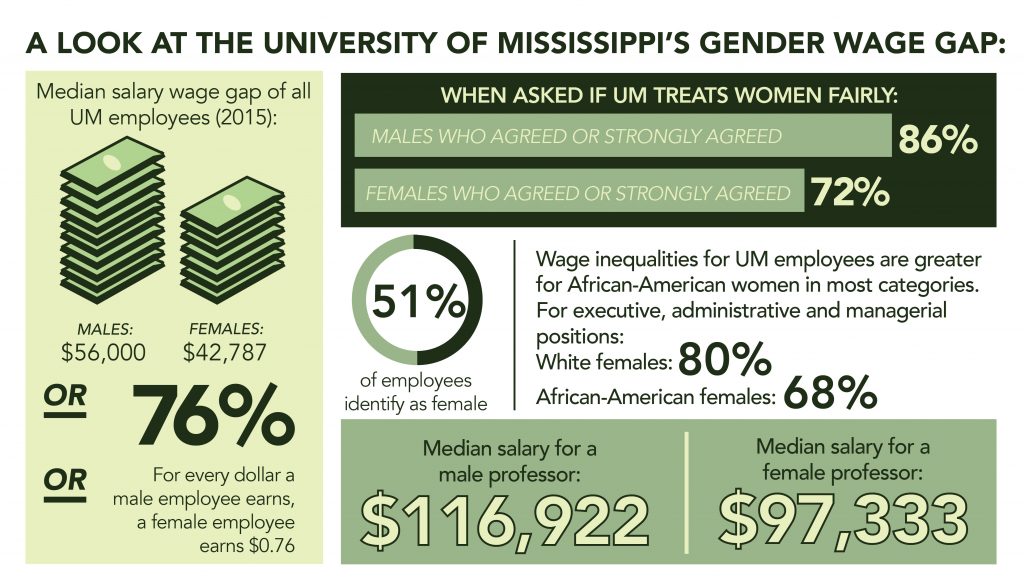The university recently released a 2017 Pay Equity and Advancement Report through the Chancellor’s Commission on the Status of Women at the University of Mississippi.
Including data gathered from 2007 to 2015, the report outlines the existence of a pay gap between male and female employees in each school at the university.
According to the report, the median salary for a male professor is $116,922, while a female professor has a median salary of $97,333.
There is a clear gap between male and female faculty members’ earnings, that other factors – such as tenure status, department and role – could all also affect.
Kirsten Dellinger, chair of the Sociology Department, said acknowledging that the gap exists is the first step in the right direction.

Photo illustration: Hayden Benge
“Organizations that conduct wage gap assessments on a regular basis are more likely to address and close these gaps than organizations that do not,” Dellinger said. “Regular reporting keeps these issues on our radar.“
Laura Antonow, director of the Office of College Programs, agrees.
“Reaction to the report has been generally very positive,” Antonow said. “The chancellor and the provost were very receptive when we presented the commission’s report and recommendations.”
The Office of the Provost released an official statement regarding the report in February, affirming that “we [the Office of the Provost] are committed to working with deans, directors, and department chairs to develop mechanisms to correct problems of gender pay and advancement inequity. As stated in our strategic plan, Flagship Forward, we seek to promote competitive recruitment and retention of a diverse community of excellent faculty and staff and to develop excellence in human resources across a vibrant, diverse community.”
Other community leaders outside the university faculty are also committed to equalizing the gender pay gap.
The Sarah Isom Center for Women and Gender Studies held a town hall last month as part of Women’s History Month. The event allowed for community discussion about the Pay and Equity Advancement report.
According to Antonow, many attended and sought to provide potential solutions to the issue.
“The faculty and staff have been interested in this conversation, and we’ve heard from several department chairs and individual employees asking about how to get the ball rolling to rectify possible inequities,” Antonow said.
For now, however, both Antonow and Dellinger are encouraging more training for department chairs regarding methods to address pay inequality and an instrument to conduct an examination of pay inequity annually.
In doing so, Antonow said she hopes to create more conversations concerning the pay gap and that “the perception that women are less committed due to family responsibilities, that women are less willing to/or being penalized for negotiating starting salaries or raises, and that salaries in disciplines or fields considered more ‘feminine’ should be lower overall” will be eradicated.






